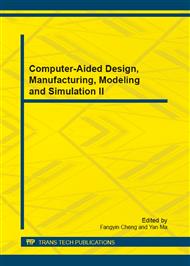p.514
p.519
p.527
p.532
p.537
p.543
p.551
p.556
p.561
Dynamics and Control of a Flexible Flapping Wing Aircraft
Abstract:
To investigate the aerodynamic performance of a flexible flapping wing aircraft, a flapping-wing system were design and an experiment were set up to measure the unsteady aerodynamic forces of the flapping motion. The thrust formula and resistance formula described aerodynamic forces. The lift and thrust of this mechanism were measured for different angles of attack and wind velocities. Results indicate that the thrust increases with the flapping frequency and the lift increase with the wind velocity, while the lift coefficient decreases while the velocity increases. It is realized that the wing’s transformation which imitated birds leads less resistance when flapping upward which impacts the aerodynamic lift generation and the bionic winglet leads to a change in the leading edge vortex and span-wise flow structures, which decrease the airflow’s backward pull. Models were introduced which were used in the design process and show its aerodynamic performance. The flexible flapping wing vehicle is still an open research area.
Info:
Periodical:
Pages:
537-542
Citation:
Online since:
December 2012
Authors:
Keywords:
Price:
Сopyright:
© 2013 Trans Tech Publications Ltd. All Rights Reserved
Share:
Citation:


